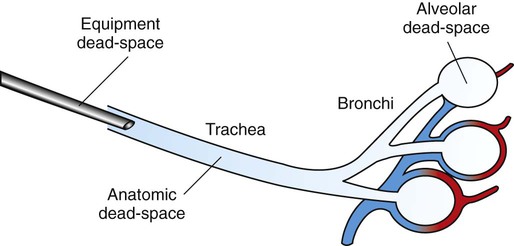

Boyle’s law describes the relationship between volume and pressure in a gas at a constant temperature. At a constant temperature, changing the volume occupied by the gas changes the pressure, as does changing the number of gas molecules. Therefore, the pressure is lower in the two-liter container and higher in the one-liter container. In this case, the force exerted by the movement of the gas molecules against the walls of the two-liter container is lower than the force exerted by the gas molecules in the one-liter container. For example, a certain number of gas molecules in a two-liter container has more room than the same number of gas molecules in a one-liter container ( Figure 22.3.1).

In a gas, pressure is a force created by the movement of gas molecules that are confined. Inspiration (or inhalation) and expiration (or exhalation) are dependent on the differences in pressure between the atmosphere and the lungs. However, the ability to breathe-to have air enter the lungs during inspiration and air leave the lungs during expiration-is dependent on the air pressure of the atmosphere and the air pressure within the lungs. The alveolar and intrapleural pressures are dependent on certain physical features of the lung. The major mechanisms that drive pulmonary ventilation are atmospheric pressure ( P atm) the air pressure within the alveoli, called alveolar pressure ( P alv) and the pressure within the pleural cavity, called intrapleural pressure ( P ip). Pulmonary ventilation is the act of breathing, which can be described as the movement of air into and out of the lungs. Discuss factors that can influence the respiratory rate.Describe the respiratory centers of the pons.Describe the respiratory centers of the medulla oblongata.Outline the mechanisms behind the control of breathing.Discuss the meaning of respiratory volume and capacities.Discuss the physical factors related to breathing.List the steps involved in pulmonary ventilation.Discuss how pressure, volume, and resistance are related.Describe the mechanisms that drive breathing.By the end of this section, you will be able to:


 0 kommentar(er)
0 kommentar(er)
